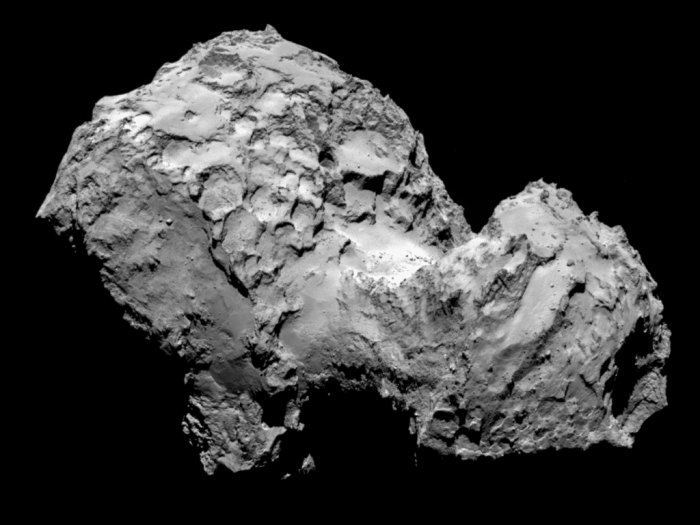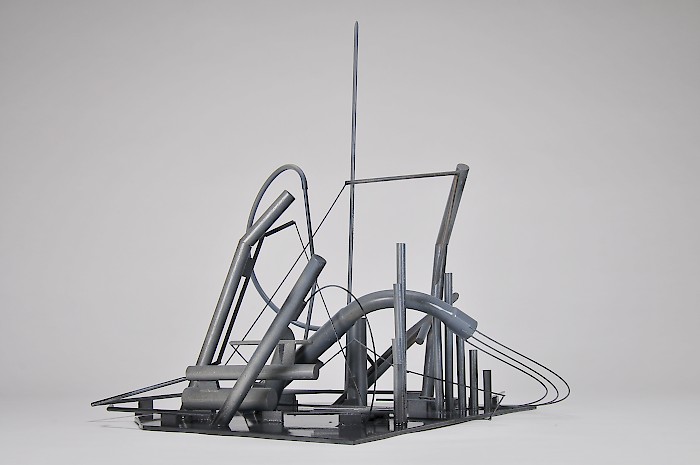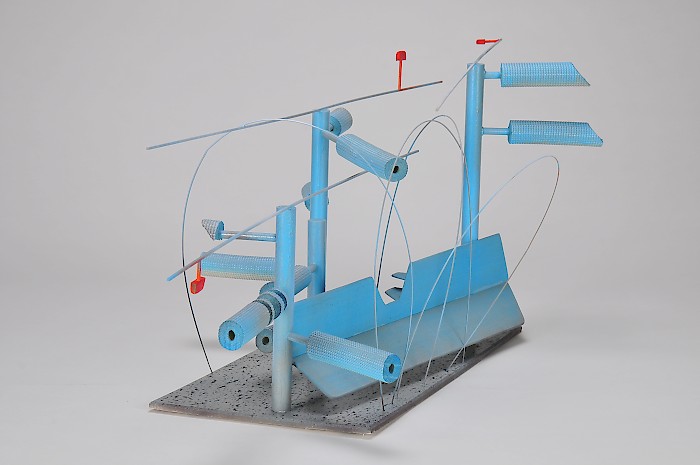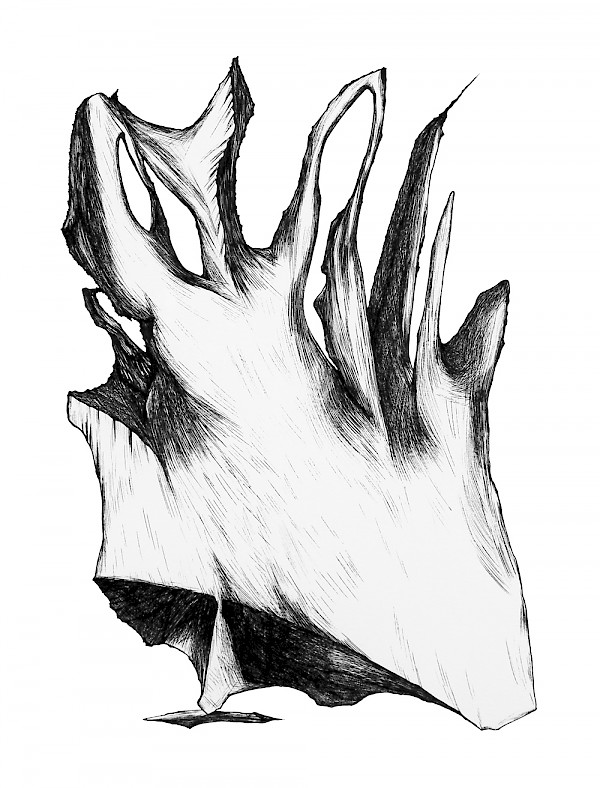— The Forms of Non-Belonging

I knew that he was going to succeed, for he had time on his side, and that the foundations of the world were going to collapse; he was moved by no precise motivation, but an animal-like obstinacy; I attributed to him the intuitive knowledge and powers of a shaman.
—Michel Houellebecq1Michel Houellebecq, The Possibility of an Island (London: Phoenix, 2005), 191.
Pelin Tan: An artifact is always related to decay and time; thus it is not only situated in historical time. Just remember our experience of the “arche-fossil” in the geography of Mesopotamia. The philosopher Quentin Meillassoux has introduced the concept of the arche-fossil as a framework for looking at “not just materials indicating the traces of past life … but materials indicating the existence of an ancestral reality or event.”2Quentin Meillassoux, After Finitude: An Essay on the Necessity of Contingency (London: Bloomsbury Academic, 2008), 22. I think the basic questions you and I were both rooted in were: How we can think of something we never before thought? How can we feel it? What is the feeling of it? Actually, this was your question when we began trying to understand form in the time of cosmos. I think an artifact, or the form of an artifact, is always somewhat unknown because it also carries a potential.

Emre Hüner: Yes, these are also the questions posed by speculative realism: If there is something outside of thought, how do you know it without thinking it? It’s related to the notion of the great outdoors, as Meillassoux calls it. I approach this through the transformation and transmission of memory, of given information without a clear source associated with it; this is the void where we look for things we never thought before, or at least a vague feeling of it. For instance, I visualize encrypted porous surfaces, often impossible to calculate, and then I realize that these might actually be similar to the images of the Comet 67P sent by the Rosetta Probe. And then I see a superior model in this of a more durable memory, a potentially perfect cosmic artifact or arche-fossil whose place in time is much larger than any historical reference.

PT: In my understanding, the arche-fossil as artifact does not create the collective human past, but the reverse: the “now” and the “horizon” of the future. I would like to understand how I would “think” again or “act” again from the position of this kind of time.
EH: I’m also attracted by the idea of spatial environments unrecognizable to machines and other extreme topographies such as a comet’s surface.3Geoff Manaugh, “We Don’t Have an Algorithm for This,” BLDG BLOG, November 14, 2014 → Or maybe we can look at the ruins of Göbekli Tepe, of our reinterpretation of their societies and rituals as we try to reconstruct the artifacts of this period as ancestral realities.4 See → I superimpose these onto the present time, thinking of them together with the possibilities of something like asteroid mining and positioning myself in relation to the knowledge of today to basically fabricate artificial memories from this filtered information into an ever-expanding feedback loop.5Vilem Flusser, Vampyroteuthis Infernalis (Minneapolis: University of Minnesota Press, 2012), 62. That’s how I would like to approach these forms.

PT: Arche-fossils can also be seen as traces of human violence, as well as of putrefaction, which is all about the collapse of the system. Thinking of the territory around Göbekli Tepe, which happens to be near where I live in Mardin, I wonder whether it can be understood as an unknown territory, a ruin, an arazi? A territory is not so much a tabula rasa as much as it is somehow the formation of an anachronism. For Paolo Virno, real anachronism is false recognition—the difference between potential and act as the foundation of historicity.6 Virno defines real anachronism: “The real anachronism conceals the difference between potential and act (the foundation of historicity), thus reducing potential to a previous act, a faculty to past performances, and language to already-spoken words … The real anachronism is based on the formal anachronism, attesting to its opposite as it clashes with and deforms it.” Virno, “Déjà Vu and the End of History,” e-flux journal 62 (February 2015) →The things, the artifacts, and the arche-fossils of violence are connected to territory, and anachronism is part of them. For instance, extrajudicial killings in the 1990s in and around the city of Mardin create a subtle territory calling for another kind of excavation to try to give voice to the bones of humans who were killed by the “deep state” during the civil war.7For eleven years Mardin Human Rights Association lawyers have led an excavation process of missing human bodies of Kurdish people from around the Mardin region. An ongoing process of forensic research and excavation in Mardin of the remains of missing people shows how the hidden violence of the past serves an immanent testimonial role in forming this extreme territory.8“Arazinin Altı ve Şeyler—Mardin ve Çevresi Faili Meçhul Araştırması” (Under the Territory—Mardin Region Extrajudicial Killings Research), Pelin Tan interviews lawyer Erdal Kuzu, Director of Mardin Human Rights Association, April 2015 → Peeling off the layers of land, excavating each geological level, only reveals a putrefaction of things that brings to the surface the degree to which we need to relate to a spatial corruption.
EH: When you were researching refugee camps, you also spoke about the camp in relation to the architecture of decay.
PT: I see urbanized and temporary refugee camps or settlements as forms of “decay”—a subtractive building process that is both about anachronism and a decay of architecture itself.9 Pelin Tan, “Transversal Materialism: On Artifact, Method, and Exception,” in 2000+: The Urgencies of Architectural Theory, ed. James Graham (New York: GSAPP Books, 2015). I see the experience of such ad hoc infrastructures as camps or tents not in the total context of a state of emergency or a limited spatial form of exception. The decay of forms compels us to deal with anachronisms that do not withhold the “inhumanity” rooted in human history. Reza Negarestani has asked: “Is decay a positive or a negative building process?,” and he adds, “the building process of decay is subtractive, which is to say, it is concurrently intensively negative and extensively positive.”10 Reza Negarestani, “Undercover Softness: An Introduction to the Architecture and Politics of Decay,” Collapse VI: 386. The contraction of the negative and positive sides of the process of decay, the subtraction of forms, comprises the potentials—the infinite latitudes of forms. Negarestani’s first axiom is: “decay is a building process; it has a chemical slant and a differential … dynamic distribution. The process of decay builds new states of extensity, affect, magnitude, and even integrity from and out of system or formation without nullifying or reforming it.”11Ibid. Refugee camps are part of this process of building an infrastructure that deterritorializes the refugee as an arche-fossil of the posthuman era. The possible putrefaction of arche-fossils, and the time connected to the processes of formation, is about the relation of anachronism to “decay.” I observe this in your works, such as Fordlandia, or in your recent sculptures in Kitakyushu.

EH: In Fordlandia there is a different kind of decay—a modern industrial ruin of Ford’s capitalist utopia devoured by the jungle. The forms I imagined in Kitakyushu are the result of a different process that I started thinking about with an excerpt in mind from Italo Calvino’s Six Memos for the Next Millennium, which says: “Thus, astride our bucket, we shall face the new millennium, without hoping to find anything more in it than what we ourselves are able to bring to it.”12Italo Calvino, Six Memos for the Next Millenium (Cambridge, MA: Harvard University Press, 1988), 29. I used this as a pretext to imagine architectural and social textures vaguely placed in Japan’s future, but also in an abstract and fictional situation. They might be built on the stratas of past societies, subtracted from older decaying forms, but they are more dominant and clean; they are no longer artifacts, but rather imposing structures of a sterile inhuman reality. If the idea in Fordlandia is still about a quixotic human struggle against forces of nature, as in my other works, the structures of a future Kitakyushu belong to a network of machines in which the putrefaction has already set in and done its work, and now awaits the next cycle of decay. In this sense, the work I did at CCA Kitakyushu, Floating Cabin Rider Capsule Reactor Cycle, is a landscape, a panorama of a reduced world, “simplified to the extreme.”13 “… an attempt to imagine an experimental landscape in which our being-in-world is simplified to the extreme, and in which our sensory links with the multiple and shifting perceptual fields around us are abstracted so radically as to vouchsafe, perhaps, some new glimpse as to the ultimate nature of human reality.” Fredric Jameson, Archaeologies of the Future (London: Verso, 2007), 269. Thinking about forms of decay as part of a positive process of creativity or of nature building itself, I recall a fragment from Roger Caillois’s The Writing of Stones,14Roger Caillois, The Writing of Stones (Charlottesville: VA: University Press of Virginia, 1985), 105. at the same time as I imagine a strange connection between this text and Hayy Ibn Yaqzan’s birth,15“On the other hand, those who affirm that Hayy Ibn Yaqzan was produced without Father and Mother, tell us, that in that Island, in a piece of low Ground, it chanc’d that a certain Mass of Earth was so fermented in some period of Years, that the Hot was so equally mix’d with the Cold, and the Moist with the Dry, that none of ’em prevail’d over the other; and that this Mass was of a very great Bulk, in which, some parts were better and more equally Temper'd than others, and fitter to form the seminal Humours; the middle part especially, which came nearest to the Temper of Man’s Body. This Matter being in a fermentation, there arose some Bubbles by reason of its viscousness, and it chanc’d that in the midst of it there was formed a very little Bubble, which was divided into tow with a thin partition, full of Spirituous and Aerial Substance, and of the most exact Temperature imaginable.” Abu Bakr Ibn Tufail, The History of Hayy Ibn Yaqzan, trans. S. Ockley (New York: Frederic A. Stokes Company Publishers, 1930), 45–46. the cloning process in The Possibility of an Island,16“‘These tubes contain the chemical substances necessary for the manufacture of a living being,’ continues Miskiewicz, ‘carbon, hydrogen, oxygen, nitrogen, and the different trace elements.’ ‘It is in this tranparent bubble,’ added the prophet enthusiastically, ‘that the first human conceived in a completely artificial manner will be born; the first real cyborg.’” Houellebecq, The Possibility of an Island, 168. and the idea of decay in Negarestani’s “Undercover Softness,” as you just mentioned. Callois writes,
Life appears: a complex dampness, destined to an intricate future and charged with secret virtues, capable of challenge and creation. A kind of precarious slime, of surface mildew, in which a ferment is already working. A turbulent, spasmodic sap, a presage and expectation of a new way of being, breaking with mineral perpetuity and boldy exchanging it for the doubtful privilege of being able to tremble, decay, and multiply.17Callois, The Writing of Stones.
PT: Their relation to the time and space of Houellebecq’s cloned protagonist Daniel and Ibn Tufail’s Hayy Ibn Yaqzan converge in a similar era of cosmic time.18 The History of Hayy Ibn Yaqzan. Although Hayy and Daniel are from different centuries, both witness the process of decay within their own forms of becoming. However, Hayy was raised on an island (in wild nature with animals, savages, etc.), while Daniel goes to the end to experience the other world of savage ecology, the posthuman era. I am curious about forms that belong to the cosmic time of non-belonging. Referring to Deleuze, Negarestani describes cosmic time as that “which belongs to nothing and no one, the absolute time of pure contingencies or cosmic climate.”19Negarestani, 391. Decay is defined according to a different conception of time: as a romanticized concept, a necrocratic fetish, as a differential form of emptiness, as an ontological fate.20Ibid, 399. I would describe your sculptures in terms of necrocratic fetish.
EH: There is a passage I like in which the “original” Daniel questions his fate, talking about a “pure terror of space”:
... the truth of all things, the only physical horizon, indistinguishable from the observable world. There is no longer any real world, no world, no human world, I am outside time, I no longer have any past or future, I have no more sadness, plans, nostalgia, loss, or hope ... The space is coming, it approaches and seeks to devour me.21Houellebecq, The Possibility of an Island, 296.
He almost speaks as his own clone after a millennium and his feelings are very similar to what Roger Caillois mentions in “Mimicry and Legendary Psychaesthenia” about this “dark space where things cannot be put.”22 Roger Caillois and John Shepley, “Mimicry and Legendary Psychaesthenia,” October 31 (Winter 1984): 16–32.

The necrocratic fetish might be part of a desire to mimic fossilized artifacts of unknown civilizations using unidentifiable materials. Sometimes I think of these sculptures as relictures in the sense that we might encounter a similar scenario on Mars when using machines to look for life or water, presuming that there was once an unknown element in the Comet 67P’s rock formations. Somehow this information is being re-etched on the surfaces of these necrocratic forms. In The Shrines of the Post-Hypnotic I tried to capture the feeling of this ungraspable cosmic time, drawing almost in the way that a 3-D printing machine would, recording seismic waves or the tension in minerals of floating rock formations in a dimensionless void. I recall this phrase from Deleuze in The Logic of Sense: “The present has become a circle of crystal or of granite, formed about a soft core, a core of lava, of liquid or viscous glass. This tension, however, is unraveled for the sake of something else.”23 Gilles Deleuze, The Logic of Sense (New York: Columbia University Press, 1990), 158. There is a fear of time, and in Neochronophobiq these objects and landscapes are also alive—like extreme metaphors of a petrified language, they have the sound of cracking glass, moving and transforming slowly, a tactile knowledge, objects of ritual, thought-forms or neohuman hallucinations or dreams, fired and glazed clay pieces, forms of nonlinear storytelling. As Negarestani writes, “These sites spatially narrate chemical activities potentiated by time’s contingencies, activities whose irruption endows the spatial plot with a holey and porous underside.”24 Negarestani, “Undercover Softness,” 398.
×

